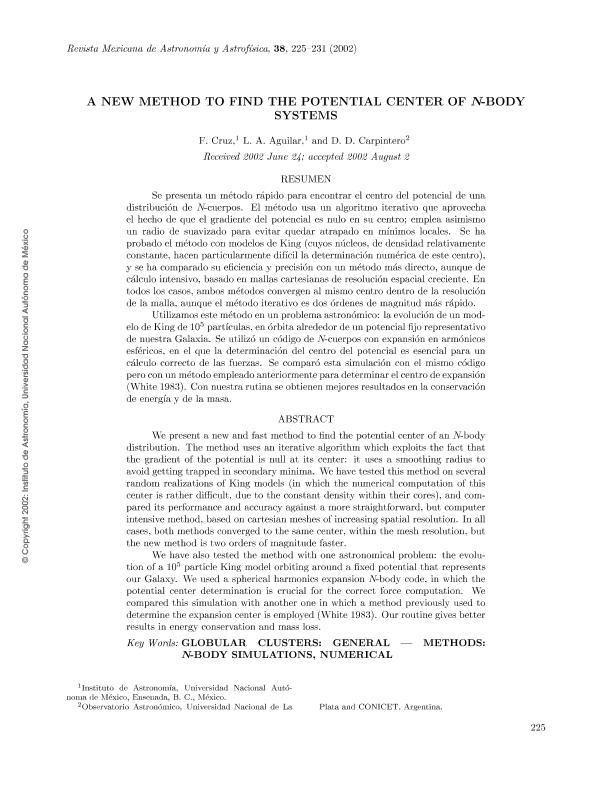Artículo
A new method to find the potential center of N-body systems
Fecha de publicación:
09/2002
Editorial:
Universidad Nacional Autónoma de México. Instituto de Astronomía
Revista:
Revista Mexicana de Astronomía y Astrofísica
ISSN:
0185-1101
Idioma:
Inglés
Tipo de recurso:
Artículo publicado
Resumen
We present a new and fast method to nd the potential center of an N-body
distribution. The method uses an iterative algorithm which exploits the fact that
the gradient of the potential is null at its center: it uses a smoothing radius to
avoid getting trapped in secondary minima. We have tested this method on several
random realizations of King models (in which the numerical computation of this
center is rather dicult, due to the constant density within their cores), and com-
pared its performance and accuracy against a more straightforward, but computer
intensive method, based on cartesian meshes of increasing spatial resolution. In all
cases, both methods converged to the same center, within the mesh resolution, but
the new method is two orders of magnitude faster.
We have also tested the method with one astronomical problem: the evolu-
tion of a 105 particle King model orbiting around a xed potential that represents
our Galaxy. We used a spherical harmonics expansion N-body code, in which the
potential center determination is crucial for the correct force computation. We
compared this simulation with another one in which a method previously used to
determine the expansion center is employed (White 1983). Our routine gives better
results in energy conservation and mass loss.
Palabras clave:
Globular Clusters
,
Numerical Methods
,
N Body Simulations
Archivos asociados
Licencia
Identificadores
Colecciones
Articulos(IALP)
Articulos de INST.DE ASTROFISICA LA PLATA
Articulos de INST.DE ASTROFISICA LA PLATA
Citación
Aguilar, L. A.; Cruz, F.; Carpintero, Daniel Diego; A new method to find the potential center of N-body systems; Universidad Nacional Autónoma de México. Instituto de Astronomía; Revista Mexicana de Astronomía y Astrofísica; 38; 9-2002; 225-231
Compartir




